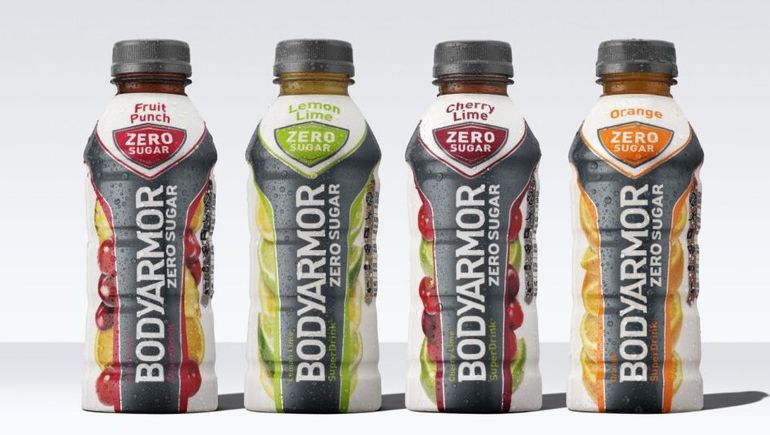Coca-Cola’s BodyArmor launches zero sugar offering in battle with Gatorade

BodyArmor is launching a zero-sugar product as the Coca-Cola-owned brand takes aim at a similar Gatorade beverage from rival PepsiCo.
The new extension, BodyArmor Zero Sugar, targets the fast-growing no-sugar category in sports drinks valued at $2 billion, according to Nielsen data provided by the brand. It will initially be available in four flavors: Fruit Punch, Lemon Lime, Orange and Cherry Lime.
“Zero Sugar is somewhere that BodyArmor needs to play,” Sabrina Niland, vice president of innovation with BodyArmor, said in an interview. “There’s a host of consumers that we are not able to reach right now because they’re sugar avoiders.”
After a rocky start following Coca-Cola’s $5.6 billion purchase of the rest of BodyArmor it didn’t own in 2021, the beverage giant appears to have stabilized the business enough that it feels comfortable introducing the sports drink to a broader range of consumers through new product offerings.
Niland said new leadership installed by Coca-Cola after the acquisition identified zero sugar and rapid hydration as two untapped areas for BodyArmor. The company entered the rapid rehydration beverage category in June with BodyArmor Flash I.V., the brand’s first major product offering in two years.
In both rapid hydration and now zero sugar, BodyArmor is entering a category where Gatorade and other players dominate. This places the impetus on Coca-Cola to woo consumers to the BodyArmor brand through taste and aspects that set it apart.
BodyArmor Zero Sugar is leaning big into its health credentials, touting the new offering as the first better-for-you item in the $10.7 billion sports drink category.

Optional Caption
Christopher Doering/Food Dive
That’s “what sets us apart from the rest of the category,” Niland said. “It’s a huge, huge segment of sports drinks that have not had a better-for-you offering.”
BodyArmor, which was created in 2011, has grown into a $1 billion-plus premium sports drink brand through low sodium and high potassium levels, antioxidants, vitamins B and C and the absence of artificial colors and flavors. These attributes are incorporated in BodyArmor Zero Sugar.
One ingredient missing from prior iterations of BodyArmor is coconut water; it was replaced with stevia to allow the product to be labeled zero sugar.
It’s no surprise that consumers are curtailing their sugar consumption as part of a pursuit to improve their health.
While BodyArmor has touted the better-for-you ingredients in its drink, having one without sugar was a notable void for the beverage. Niland, who previously worked at Danone and PepsiCo before joining BodyArmor in June 2022, admitted she was “surprised” by the absence of a zero sugar line.
BodyArmor has made notable inroads in sports drinks in just over a decade, but it remains a distant player in the category behind Gatorade. BodyArmor and Powerade, also owned by Coca-Cola, have a combined 23% market share, according to Nielsen AMC data provided by the beverage giant, while Gatorade, including G Zero, is at 64%.
Powerade had the first zero-sugar launch in 2007, Niland said, which gave Coca-Cola “the knowledge and the credentials” in the zero-sugar segment of sports drinks.
Similar to the decades-long battle between Coke and Pepsi in soft drinks, Coca-Cola is gunning for PepsiCo with the Zero Sugar launch.
BodyArmor provided information comparing the nutritional attributes and ingredients of its Zero Sugar compared to a G Zero. The data showed Zero Sugar has more potassium and magnesium. It also has zinc and vitamins B and C that G Zero doesn’t. One area where Gatorade narrowly trumps Zero Sugar is with fewer calories; four calories compared to 10.
”We’re going up against Goliath, and we’re really focused on becoming No. 1,” Niland said. “We’ll continue to innovate across [Powerade and BodyArmor], to drive growth for the category and for our brands.”
She said BodyArmor is working on “a ton of other opportunities,” including new categories and extensions of existing products that could hit the market in the coming year. “That pace [of innovation] will not slow down,” Niland noted.
Source: fooddive.com

